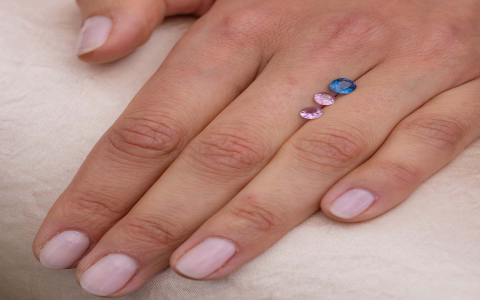Does chlorine ruin nail polish?
When you think about taking a refreshing summer dip or relaxing in an indoor pool, the last thing you want to worry about is the fate of your meticulously painted nails. Yet, the question, "Does chlorine ruin nail polish?" often swirls around, whether you’re lounging by the poolside or just cleaning the dishes with chlorinated water. Let’s dive into the relationship between nail polish and chlorine and find out what really happens beneath the waves.

At the heart of this frequently asked question is the chemical interaction between nail polish and chlorine. Chlorine, used widely in pools, hot tubs, and even tap water to disinfect and purify, is a powerful oxidizing agent. This means it can react with many substances, including those found in nail polishes. Here’s what you need to know:
Direct Exposure Affects Longevity: Nail polish is essentially a lacquer or polymer film applied on the nails. When this film gets exposed to chlorine, especially in high concentrations like in swimming pools, the polish can degrade. Chlorine breaks down the components in the polish, causing:
- Discoloration: The vibrant colors of your manicure might fade or get a yellowish hue due to chlorine’s bleaching properties.
- Peeling: The top layers of polish might start to lift or peel, allowing water (and more chlorine) to seep in and exacerbate damage.
- Weakening: The structural integrity of the polish gets compromised, leading to chips, cracks, or even total polish removal in sensitive individuals.
However, not all nail polishes are created equal when facing the might of chlorine:
- Quick-dry polishes often contain solvents like acetone or butyl acetate, which can react more aggressively with chlorine, hence fading faster upon exposure.
- Gel and acrylic nails seem to offer a bit more resistance due to their harder, more protective layers, but they are not entirely immune to damage over time.
Factors that Influence Damage:
- Concentration of Chlorine: Obviously, the stronger the chlorine content, the more potential for damage.
- Duration of Exposure: Longer exposure means more opportunity for chlorine to work its magic on your nails.
- Type of Polish: As mentioned, different polishes have varied resilience to chemicals.
- Protective Measures: Using a sealant like a topcoat can provide an extra barrier against chlorine.
So what can you do to protect your manicure from the wrath of chlorine?
- Apply a Topcoat: A good quality topcoat not only adds shine but also a protective layer over the paint job, making it less susceptible to chlorine damage.
- Use Gloves: When washing dishes or cleaning with chlorinated water, gloves can shield your nails from direct contact.
- Limit Exposure: Reducing the duration and frequency of pool swimming helps mitigate the degree of impact on your nails.
- Post-Swim Care: Rinse your nails with fresh, non-chlorinated water after swimming. This simple step can wash away any chlorine residue that might linger and continue to react with the polish.
Ultimately, while chlorine does have an adversarial effect on nail polish, understanding these dynamics gives us tools to mitigate the damage. With preparation and the right approach, enjoying pool seasons or cleaning up in chlorinated water doesn’t necessarily spell doom for your manicure.
Just remember, should you find your polish wearing thin or losing its luster, it’s a battle against the elements more than a sign to stay landlocked. With smart compromises and care, your nails can continue to look stunning, irrespective of their environment.



